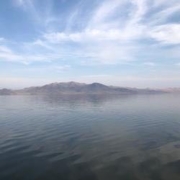Water Data and Science Committee Webinar–February 25, 2021–Mississippi Alluvial Plain Groundwater Research–USGS
- Call to Order—Chair Amy Shallcross DRBC called to order at 10:03 a.m. Central.
- Introductions of Participants on the call – Amy Shallcross, Chair; Sue Lowry; Adel Abdullah; Shawn Jackson; Brian Atkins; Tom Littlepage; Eric Robinson; Wade Loseman; Kay Whittington; Michael Hill; Ole Mikkelsen; Christopher Estes; Ken Brazil; Randy Hadland; Joy Loughry; Wes Cattoor; Mike Robertson.
- Webinar presentation—USGS Mississippi Alluvial Plain Groundwater Projects
Drew A. Westerman & Wade H. Kress, USGS Lower Mississippi-Gulf Water Science Center—A copy of presentation Slides can be found HERE (will be added when received 3/24/21)
Drew and Wade are both a part of the Lower Mississippi-Gulf Coast Water Science Center with Drew in Arkansas and Wade in Tennessee. The USGS and Arkansas Natural Resources Division have a 35+ year partnership. The Mississippi Alluvial Plan Project (MAP) began in 2017 and created improved ability to look at groundwater resources across state lines. MAP to answer questions such as: How much water do we have, how long do we expect it t be there, how much do we need for uses? 70 people working on aspects of MAP. The region has suffered declines in GW from the large number of wells tapping the Alluvial Plain aquifer. Over 50K wells reporting in AR and over 7K surface water. USGS helped AR develop an on-line method for entering water use. Timing of use led to realtime data on wells and improved modeling of GW use. AR,TN,MS, LA all involved in the MAP. Grand Prairie and Cache are the two focus areas within AR with large drawdown concerns. Inset models to add detail to the overall GW model.
Wade Kross –Associate Director for LMG Center. Airborne hydro-geophysics allows for mapping of depths and substrate mapping. Connectivity of surface water to deeper aquifer to help predict impacts and recharge rates. AEM-Airborne Elevation mapping able to replicate 1M virtual boreholes. Combining the collected GW data with NHD-Plus to show connection from surface to GW. Looking for better information about how recharge happens and where from the surface the connections occur.
Information from MAP has a multitude of ancillary uses. For example, USACE using data to better understand levee vulnerability. This technology has been used more internationally. Small other projects with virtual boreholes done in the US, such as the application regionally in Nebraska—but none done on the scale of this MAP project.
- Internship—Caroline Schwab working on WD&S topics, including the USGS Stakeholder Support letter and updating the USGS fact sheet from 2018.
- Workplan development for the Committee– Amy suggested changing to a 2-tiered layout to show the topics the committee is most interested in hearing more about during 2021 and then those topics to keep on the list for future. She will make some edits and prepare a new list for discussion at a future committee meeting.
- Roundtable Topics Germane to this Committee –if anyone has specific topics or questions for the agencies invited to present at the Roundtable, please get those to Sue or Amy.
- Other items for the Committee’s consideration
- Support for NOAA-NWS Atlas 14—FLOODS and PRECIP legislation—Both pieces of legislation are to be introduced in this current Congress soon.
- NOAA Seasonal to Sub-Seasonal Forecasting—Congressional report and pilots—ICWP has been asked to support funding for one of the pilots
- Supporting NHD Plus and other mapping efforts-Coalition support letter will be developed in April.
- 2021 Streamgaging support letter-Sue plans to have the draft letter ready soon and will focus on the number of gages being lost annually due to the flatlining of the FPS budget.
- Next call or webinar—Presentation on new Drought.gov website—March 30 at 10 a.m. Central. Next Gary Whelan will present on May 4.
Water Data and Science Committee: Mission is to educate ICWP members on current data and science trends and to advocate support for data and science programs at the national level.
Issues for 2021 Workplan
- Potential ICWP Support of USGS Efforts
- USGS NGWOS—including future basin selections
- Water-Use Data and Research—Review next USGS compilations
- IWAA indices that make sense as indicators (Mindi request at Mobile)
- Review of NAS Study on USGS Water Discipline
- Multi-Signature support letter for Streamgaging Programs (annually)
- Early spring letter signed by stakeholders
- Letter in the fall signed by states/interstates/tribes
- Improved coordination among 3 USGS support letters from coalitions
- Climate/Weather Extremes/Drought
- Flash Droughts
- NIDIS/NDRP—Support baseline, firm funding source for US Drought Monitor
- Support for a 2nd product similar to USDM specific to ag relief programs
- Support for expansion of Drought Impacts Reporter
- Baseline for determining Climate Change
- Impacts to Infrastructure planning
- Paleo-drought studies
- Other items the Committee could explore:
- Internet of Water
- Data Portals/Data Exchange
- Support for NRCS Snow Survey Program
- National Water Model Priorities
- Especially understanding the underlying models and how those could be used by others
- Support for NHDPlusHR and its modeling capabilities—add to 3DEP Coalition letter in 2021
- Tracking of Emerging Tools or Trends in Water Data/Science
- Forecast Informed Reservoir Operations
- Seasonal to Sub-Seasonal Forecasting
- NASA Western Water Office—Adel will keep the committee apprised of any activities of interest beyond the western states.
Edits made to 2020 Workplan during July 30, 2020 Committee meeting

